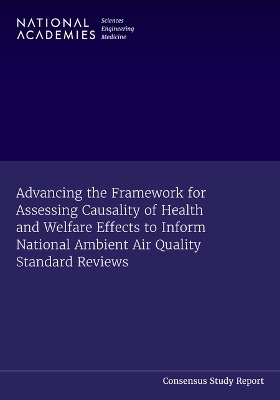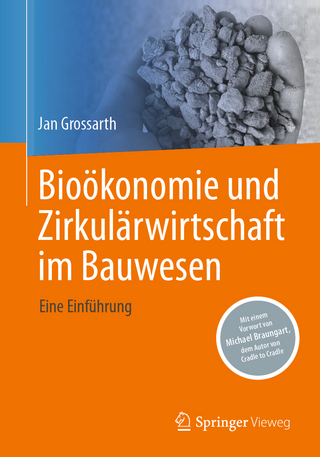
Advancing the Framework for Assessing Causality of Health and Welfare Effects to Inform National Ambient Air Quality Standard Reviews
Seiten
2023
National Academies Press (Verlag)
978-0-309-69011-9 (ISBN)
National Academies Press (Verlag)
978-0-309-69011-9 (ISBN)
As part of its responsibilities under the Clean Air Act, the U.S. Environmental Protection Agency sets National Ambient Air Quality Standards (NAAQS) for the air pollutants carbon monoxide, lead, oxides of nitrogen, particulate matter, ozone, and sulfur dioxide. EPA uses a "weight of evidence approach" to evaluate evidence from scientific studies and describe the causal relationships between these "criteria pollutants" and any adverse impacts on human health and on public welfare - including impacts on wildlife, water, forests, agriculture, and climate. The evaluation, called an Integrated Science Assessment, is used to inform standards setting associated with the criteria pollutants.
This report, produced at the request of EPA, describes EPAs and several other frameworks for inferring causality of health or welfare effects and the characteristics of evidence useful for forming a causal determination. The report concludes that EPAs causal framework is effective, reliable, and scientifically defensible, provided that key scientific questions are identified and a range of necessary expertise is engaged. More transparency in how EPA integrates evidence could improve confidence in their determinations, and more guidance is needed in the framework on how evidence should be examined for vulnerable groups (e.g., human sub-populations) and sensitive ecosystems or species.
Table of Contents
Front Matter
Summary
1 Introduction
2 Historical and Legal Perspectives on the NAAQS Framework for Assessing Causality
3 Definition of Causality
4 Influence of the Individual Study on the Body of Evidence
5 Evidence Synthesis in Integrated Science Assessments
6 Example Critiques of the ISA Process and Causal Determination Framework
7 Illustrative Frameworks for Causal Determinations
8 Emerging Methods for Observational Studies Contributing to Causal Determinations
9 Use of the Framework to Assess Both Health and Welfare Effects
10 Conclusions and Recommendations
References
Appendix A: Committee Member Biographies
Appendix B: Open Session Agendas
Appendix C: Introduction to Causal Inference Principles
This report, produced at the request of EPA, describes EPAs and several other frameworks for inferring causality of health or welfare effects and the characteristics of evidence useful for forming a causal determination. The report concludes that EPAs causal framework is effective, reliable, and scientifically defensible, provided that key scientific questions are identified and a range of necessary expertise is engaged. More transparency in how EPA integrates evidence could improve confidence in their determinations, and more guidance is needed in the framework on how evidence should be examined for vulnerable groups (e.g., human sub-populations) and sensitive ecosystems or species.
Table of Contents
Front Matter
Summary
1 Introduction
2 Historical and Legal Perspectives on the NAAQS Framework for Assessing Causality
3 Definition of Causality
4 Influence of the Individual Study on the Body of Evidence
5 Evidence Synthesis in Integrated Science Assessments
6 Example Critiques of the ISA Process and Causal Determination Framework
7 Illustrative Frameworks for Causal Determinations
8 Emerging Methods for Observational Studies Contributing to Causal Determinations
9 Use of the Framework to Assess Both Health and Welfare Effects
10 Conclusions and Recommendations
References
Appendix A: Committee Member Biographies
Appendix B: Open Session Agendas
Appendix C: Introduction to Causal Inference Principles
| Erscheinungsdatum | 05.01.2023 |
|---|---|
| Verlagsort | Washington |
| Sprache | englisch |
| Maße | 178 x 254 mm |
| Themenwelt | Naturwissenschaften ► Biologie ► Ökologie / Naturschutz |
| ISBN-10 | 0-309-69011-0 / 0309690110 |
| ISBN-13 | 978-0-309-69011-9 / 9780309690119 |
| Zustand | Neuware |
| Haben Sie eine Frage zum Produkt? |
Mehr entdecken
aus dem Bereich
aus dem Bereich
Buch | Softcover (2024)
Springer Vieweg (Verlag)
49,99 €


